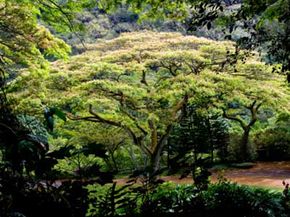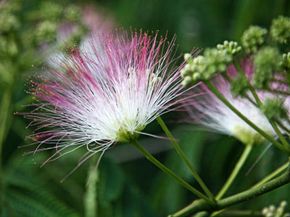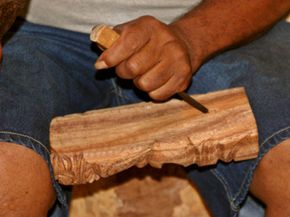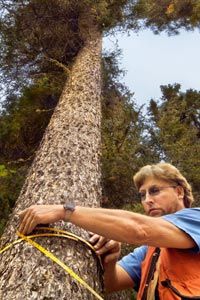Key Takeaways
- Monkeypod trees, native to Central and South America, thrive in a variety of climates, particularly in tropical, seasonally dry regions, and are found in areas like Hawaii and Florida.
- They grow moderately fast, at about 2.5 to 5 feet (0.76 to 1.5 meters) per year, have diamond-shaped green leaves and are semi-deciduous, shedding leaves briefly during the dry season.
- The trees bloom with pink powder puff-like flowers, leading to the production of edible seed pods containing a sweet, licorice-flavored pulp and seeds. They can live for about 80 to 100 years.
Monkeypod tree. It sounds a bit strange, bringing to mind a sci-fi vision of a tree that grows monkeys instead of leaves. Most likely not the kind of tree you'd want growing in your backyard! In real life, however, the monkeypod tree is quite common, and actually doesn't have all that much to do with monkeys.
A monkeypod tree can grow to a large size, reaching heights of 50 to 80 feet (15 to 24 meters), with a broad crown or canopy resembling an umbrella. The canopy is what makes this tree special. It typically grows about 100 feet (30 meters) in diameter, but can go as big as 200 feet (61 meters) if the tree is very old [source: Flores]. The canopy grows biggest when the tree can grow in an open space, where it has the freedom to spread out. Because the canopy on a monkeypod tree can grow so wide, it makes a great shade tree.
Advertisement
Monkeypod trees are often planted in pastures, along the roadside, or even in parking lots to provide shade. The monkeypod grows pink flowers that resemble powder puffs. These flowers are pollinated by insects and will develop edible seed pods about 4 to 8 inches (10 to 20 centimeters) in length.
Some people believe the monkeypod tree got its name from the monkeys that congregate on its branches to eat the sweet seed pods. Others say that monkeypod is a derivation of one of the tree's scientific names of Pithecellobium, which means "monkey earring" in Greek [source: Skolmen].
However, the tree does have several different names. Besides monkeypod, it's also widely known as a rain tree. This name probably comes from the fact that grass under a monkeypod tree always remains green, even in times of drought. That's partly because the tree's leaves curl up and close at night, which allows rain to more easily pass through to the ground. There are a few other reasons, too. The first is the tree's large canopy, which keeps the ground below shaded and cool. Secondly, the monkeypod tree adds a lot of nitrogen to the surrounding soil from its seed pod droppings, which makes the grass greener. Nitrogen is essential for plant growth, as it's a major component of chlorophyll. Another reason it's called a rain tree? When the tree is heavily flowering, the stamens from the flowers sometimes drop to the ground, like rain.
In Latin America the monkeypod tree is called the saman tree. This comes from the botanical name of Samanea saman. In the Philippines, it's called mimosa, which is derived from the family name mimosoideae.
Read the next page to learn more about the monkeypod tree -- including where and how it grows and why one company has paid more than $4 million for the rights to a single tree.
Advertisement



